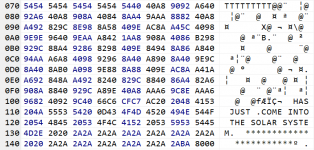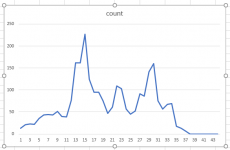RichCini
Veteran Member
All --
A gentleman from France sent me an audio recording (PCM/WAV) of a section from a Tarbell cassette to try to process into bytes. I developed a program long ago (with a lot of help from Bob Grieb) which uses a software ADC and software UAR/T to take a PCM audio stream (the MITS 88-ACR v1) and covert it to data bytes to be used with my Altair32 Emulator. So, I though that I'd take that program and adapt it for this.
In the process of pulling my old notes on the program, thought that I'd add some flexibility to allow processing different audio encodings. This is where I need some expertise to make sure I have all the bits (no pun intended).
The original MITS encoding was 1850/2400Hz, 300,N81 (10-bit data frame). There was a later version of the 88-ACR which used the Bell 103 frequencies (2025/2225Hz) but it's not clear what the serial data format was (assuming the same as v1).
When looking at the Tarbell manual, it looks like it uses 1200/2400Hz, 300,N82 (11-bit data frame) which I think is the Kansas City Standard. But, I've also read that there was a faster "Tarbell native" format which I really can't seem to locate.
Right now, my program only supports the 88-ACR v1 format but it's not that hard to add the others. If someone can help clear this up, I'd appreciate it.
Thanks!
Rich
A gentleman from France sent me an audio recording (PCM/WAV) of a section from a Tarbell cassette to try to process into bytes. I developed a program long ago (with a lot of help from Bob Grieb) which uses a software ADC and software UAR/T to take a PCM audio stream (the MITS 88-ACR v1) and covert it to data bytes to be used with my Altair32 Emulator. So, I though that I'd take that program and adapt it for this.
In the process of pulling my old notes on the program, thought that I'd add some flexibility to allow processing different audio encodings. This is where I need some expertise to make sure I have all the bits (no pun intended).
The original MITS encoding was 1850/2400Hz, 300,N81 (10-bit data frame). There was a later version of the 88-ACR which used the Bell 103 frequencies (2025/2225Hz) but it's not clear what the serial data format was (assuming the same as v1).
When looking at the Tarbell manual, it looks like it uses 1200/2400Hz, 300,N82 (11-bit data frame) which I think is the Kansas City Standard. But, I've also read that there was a faster "Tarbell native" format which I really can't seem to locate.
Right now, my program only supports the 88-ACR v1 format but it's not that hard to add the others. If someone can help clear this up, I'd appreciate it.
Thanks!
Rich






